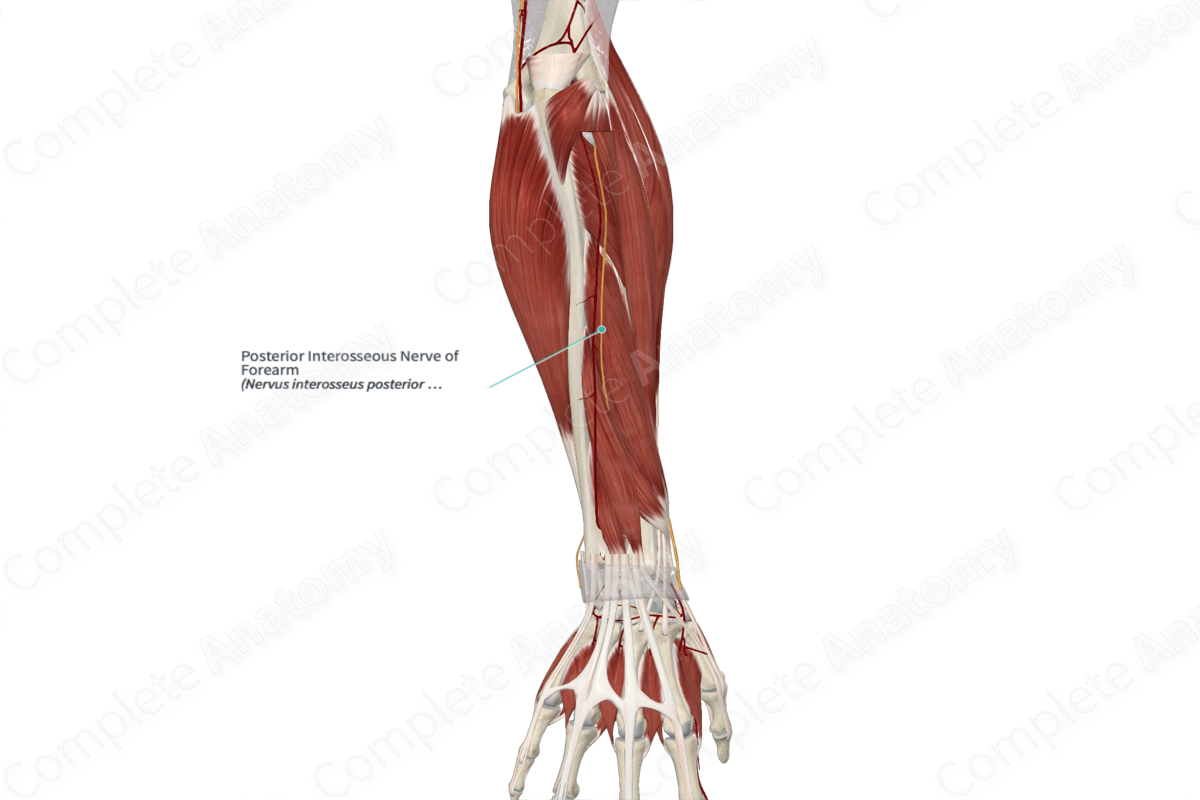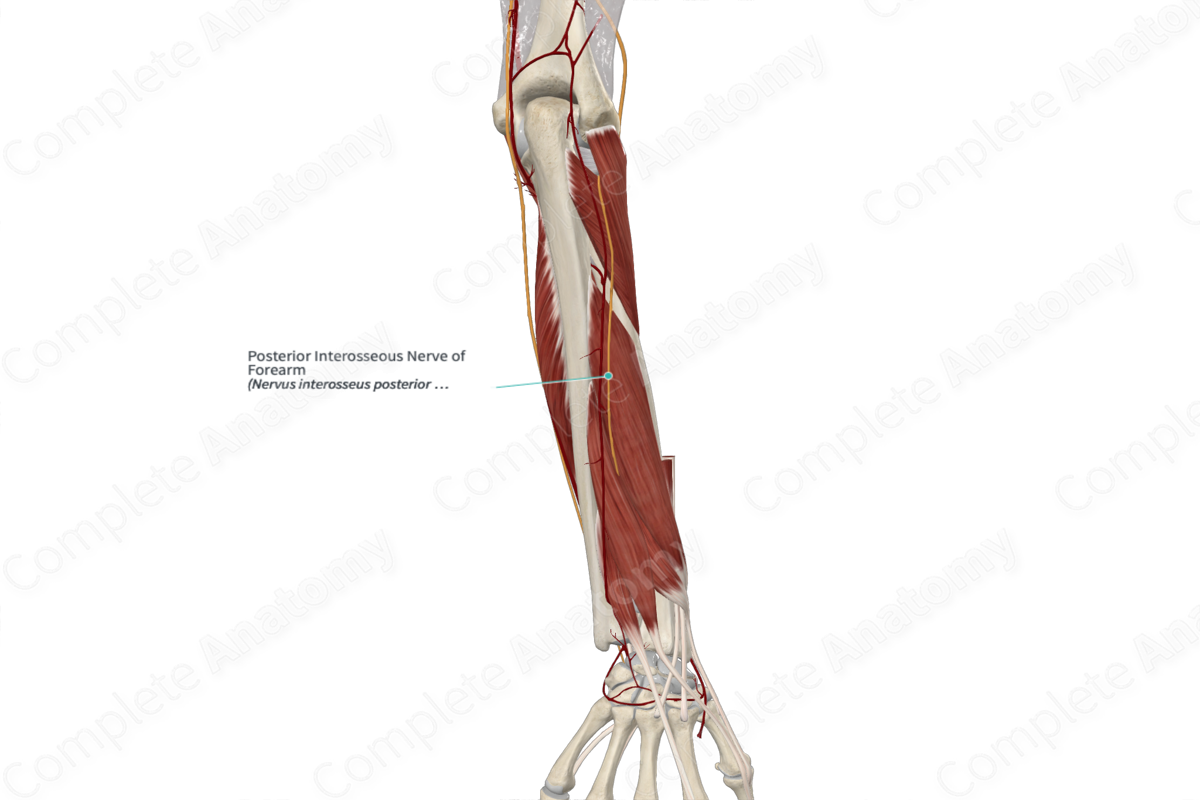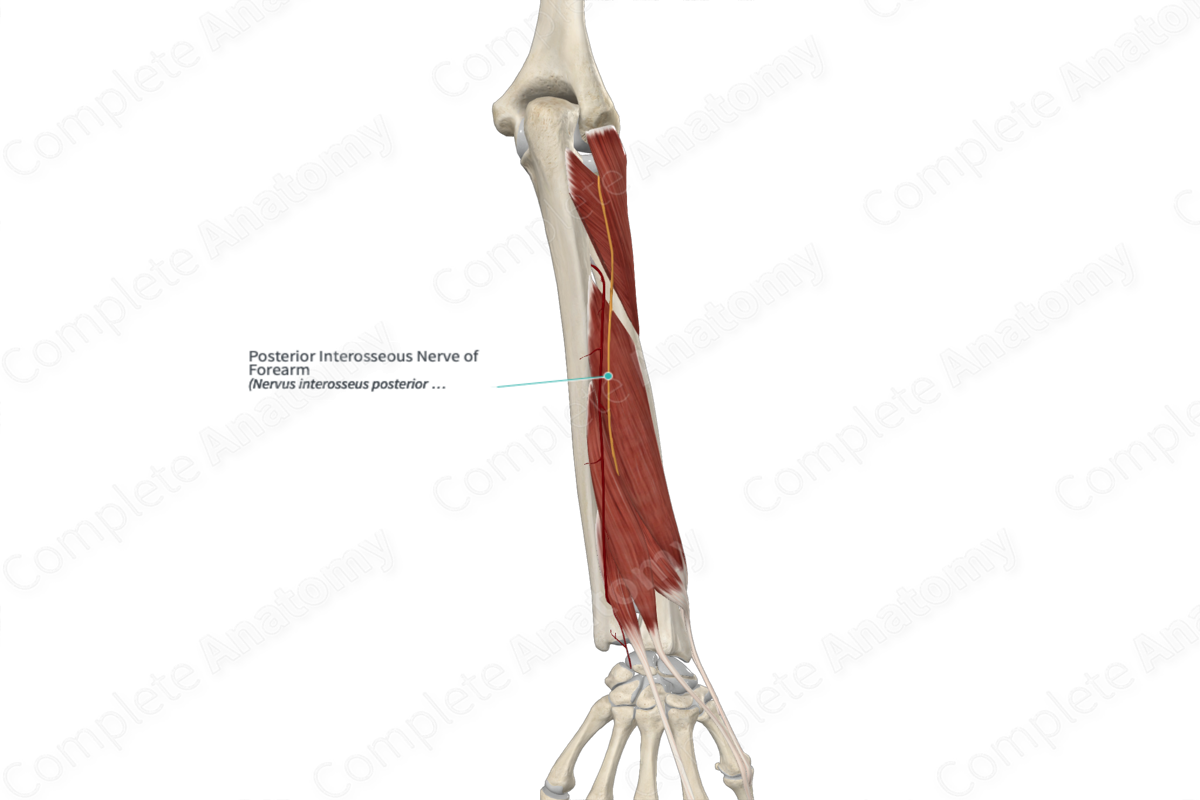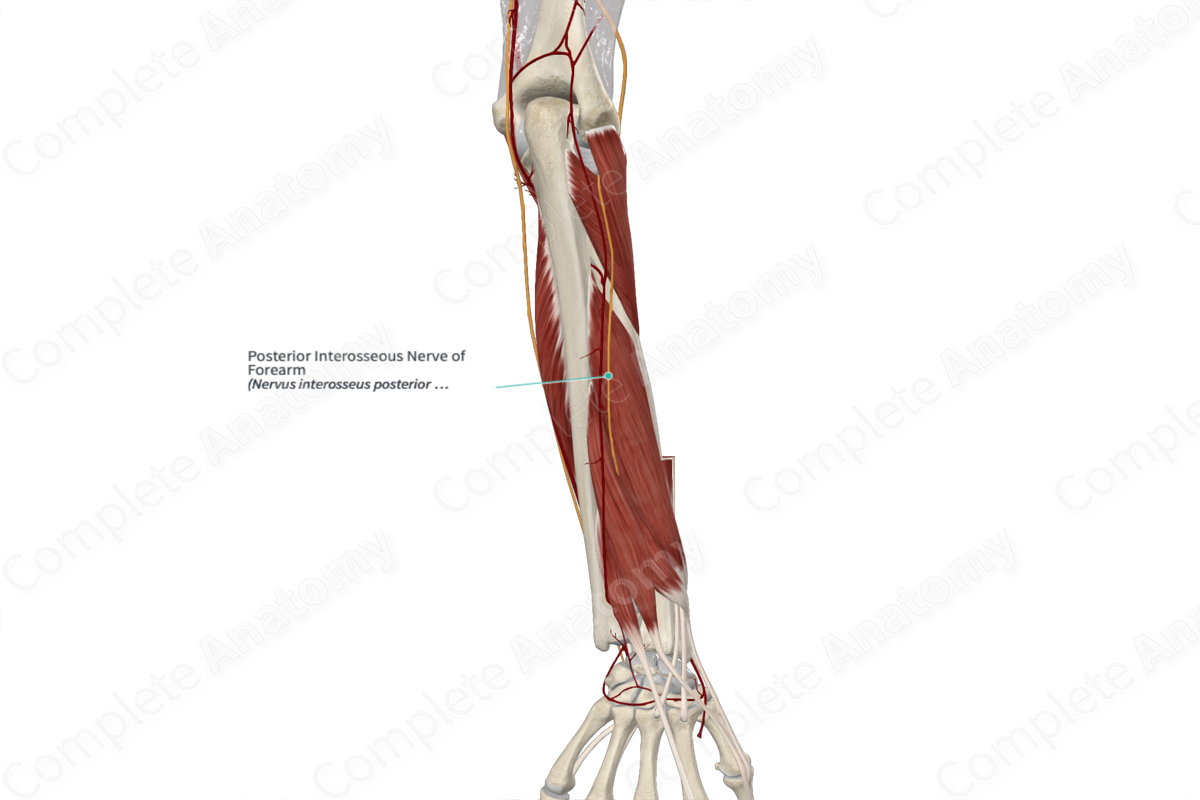
Posterior Interosseous Nerve of Forearm
Nervus interosseus posterior antebrachii
Read moreQuick Facts
Origin: Continuation of the deep branch of radial nerve (C7-C8).
Course: Descends between the two heads of the supinator muscle, along the interosseous membrane of the forearm to innervate the muscles of the dorsal forearm.
Branches: Muscular and articular branches.
Supply: Most of the muscles on the dorsal surface of the forearm.
Related parts of the anatomy
Origin
The posterior interosseous nerve of the forearm is a continuation of the deep branch of radial nerve as it passes between the two heads of supinator muscle. The nerve changes its name to posterior antebrachial interosseous nerve after it has crossed the supinator muscle. It contains motor fibers which originate from the anterior horns of the C7-C8 cervical segments of the spinal cord.
Course
The deep branch of the radial nerve is one of the two terminal branches of the radial nerve given off inside the cubital fossa. The deep branch enters the back of the forearm by passing through the supinator muscle. It emerges through the muscle and descends further as the posterior antebrachial interosseous nerve between the superficial and deep layers of the extensor muscles of the forearm. At the lower border of extensor pollicis brevis muscle, it passes deep to extensor pollicis longus. It then runs on the posterior surface of the interosseous membrane to the wrist, where it enlarges into a pseudoganglion in the fourth compartment of the extensor retinaculum. It ends by innervating the radiocarpal (wrist) and intercarpal joints.
Branches
Muscular branches are given off the posterior interosseous nerve of the forearm to the deep muscles in the posterior compartment of the forearm. In addition, it also gives off articular and sensory branches.
Supplied Structures
The posterior interosseous nerve of the forearm supplies muscles on the dorsal aspect of the forearm, including extensor digitorum, extensor digiti minimi, extensor carpi ulnaris, supinator muscle, abductor pollicis longus, extensor pollicis brevis, extensor pollicis longus, and extensor indicis.
The posterior interosseous nerve of the forearm provides articular branches to the wrist, the distal radioulnar, and intercarpal joints. Sensory branches are given to the interosseous membrane, radius, and ulna.
List of Clinical Correlates
—Supinator syndrome (Bonfiglioli, Mattioli and Violante, 2015)
References
Bonfiglioli, R., Mattioli, S. and Violante, F. S. (2015) 'Occupational mononeuropathies in industry', Handb Clin Neurol, 131, pp. 411-26.
Learn more about this topic from other Elsevier products




